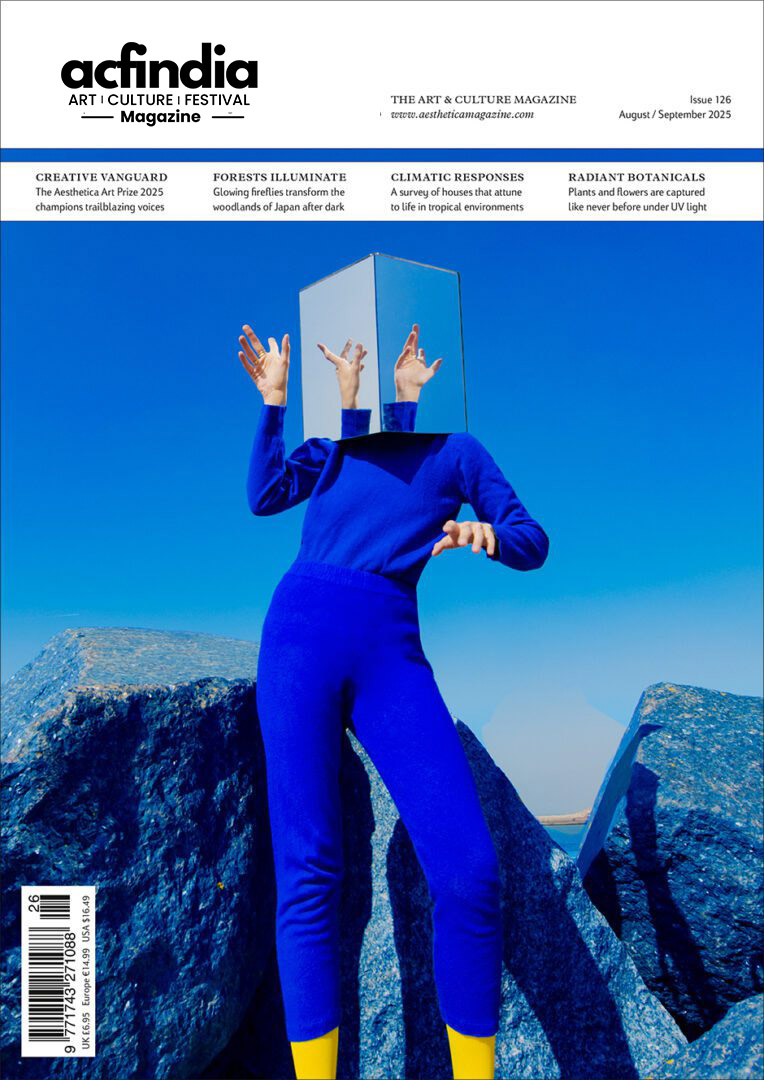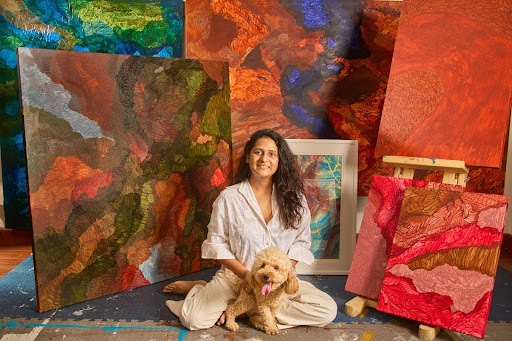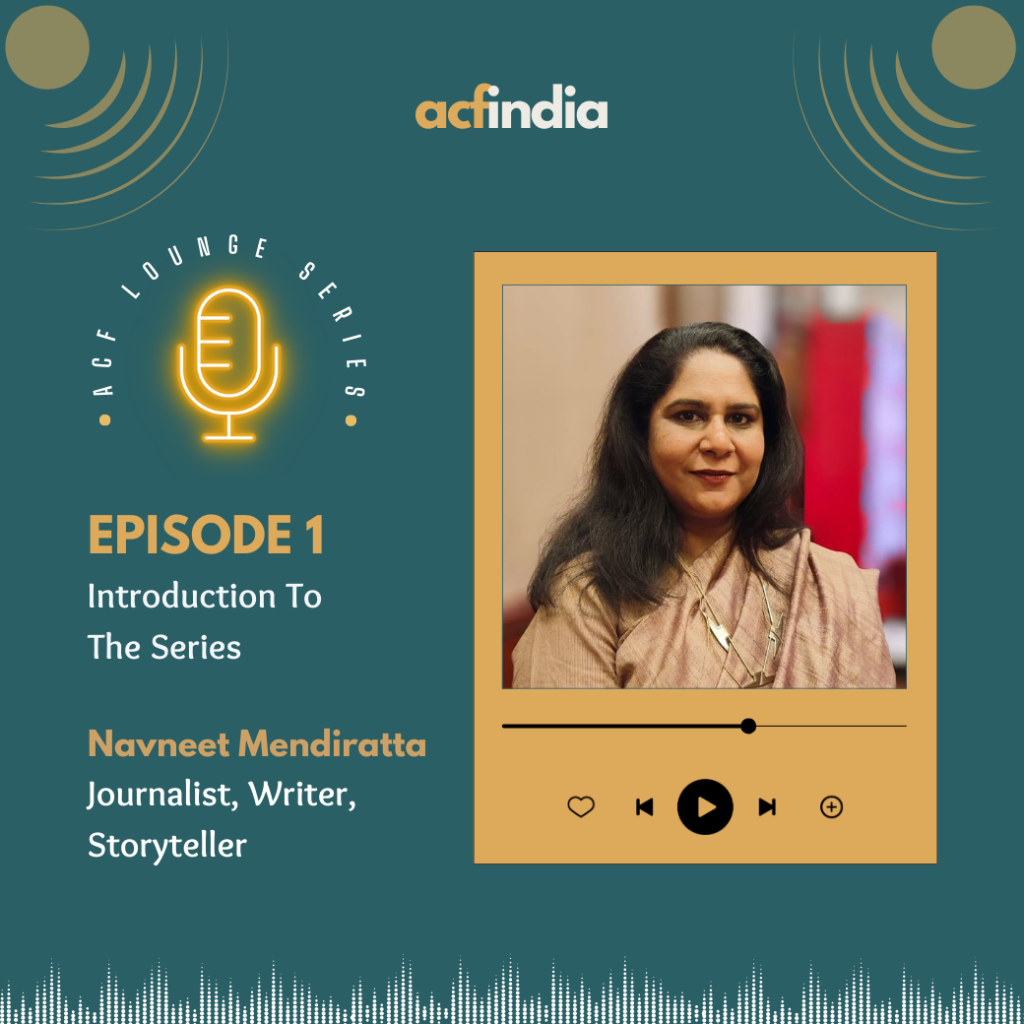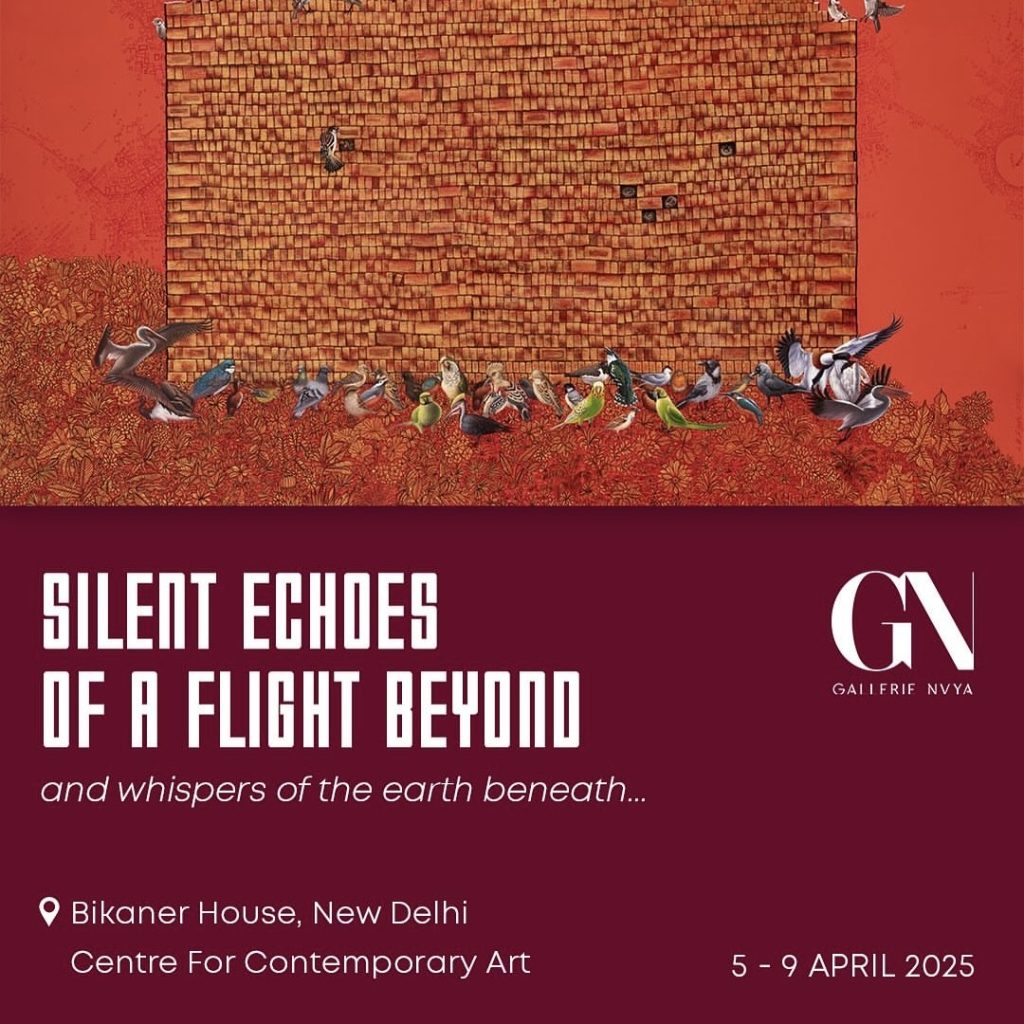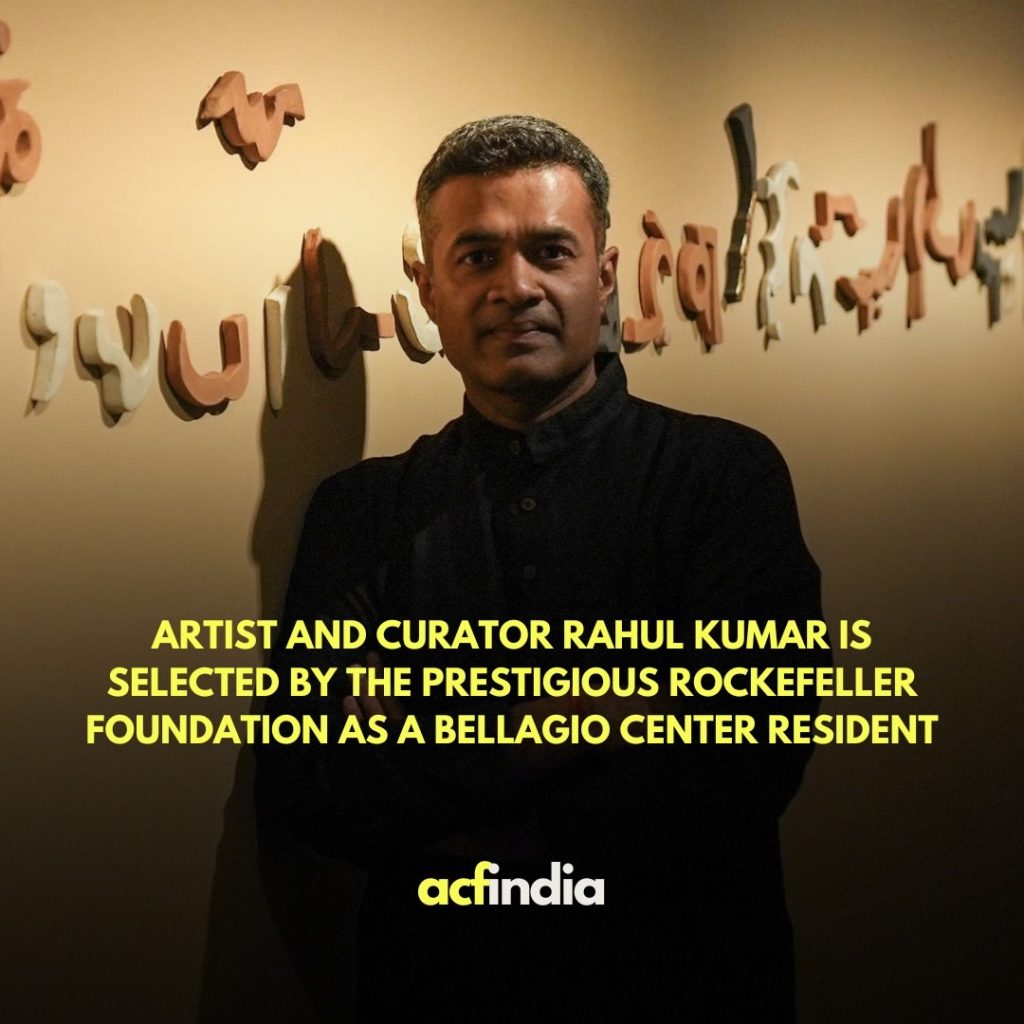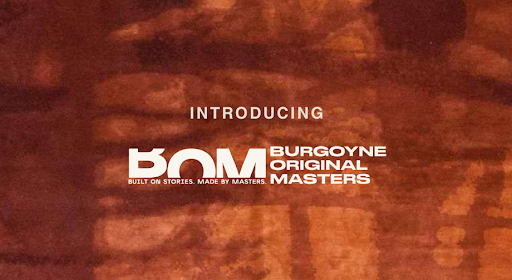By Chahat Sharma
A multidisciplinary artist based in New Delhi, Savya Jain explores the delicate terrain between memory and material, emotion and abstraction. Her practice, rooted in a deep engagement with sensory experience, transforms fleeting moments into layered visual meditations. Through her mixed-media paintings, she constructs emotional landscapes, with spaces that hover between the seen and the felt. In this conversation, Savya speaks with ACF about her relationship with memory, the fluidity of her process, and how intuition continues to guide her evolving journey as an artist.
1. You picked up paint as a child barely a year old. Do you remember the earliest moment when colour or art made you feel something? Can you paint that scene for us in words?
I remember sitting on the floor beside my mother, surrounded by scattered scraps of paper and colour. I was probably too young to understand what art was, but I do recall the feeling, that strange thrill of touching paint for the first time. It was instinctive, joyful, and unintentional. The smell of pigment and the cool texture of paint on my fingers felt like a kind of language before words. That sense of wonder has never really left me.
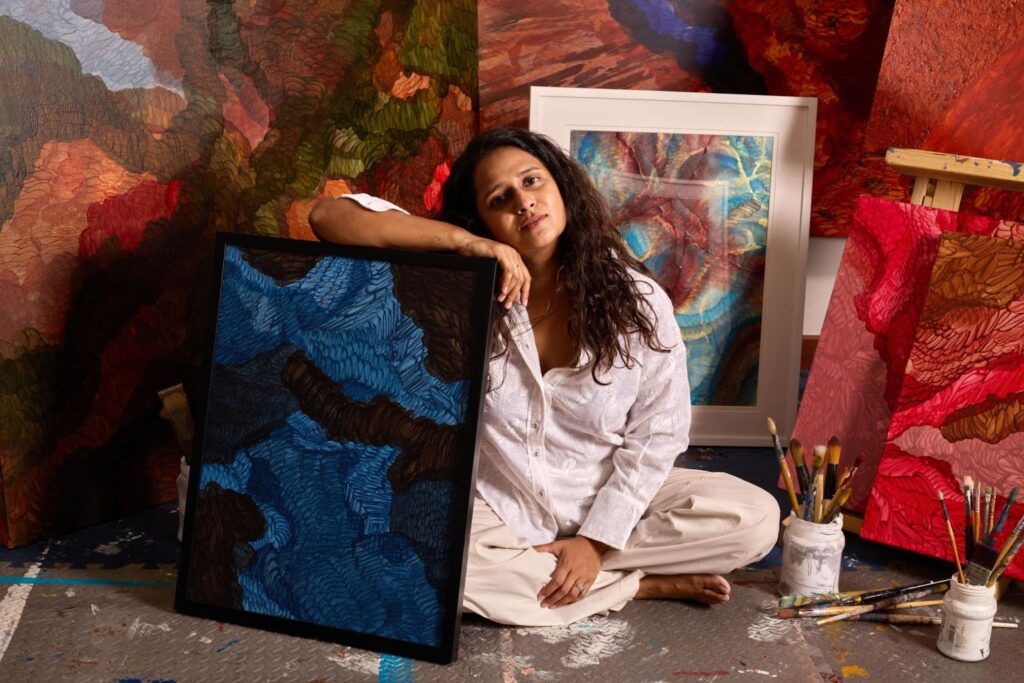
2. You once led a design division and then chose to step away from that world to become a full-time artist. What was happening in your life and mind during that transition, was it a gentle shift or a dramatic leap?
It was both gradual and sudden. For years, I was immersed in design, creating with precision and function. But somewhere along the way, I started to feel disconnected from my own creative voice. Art re-entered my life quietly, through small sketches and moments of reflection. Eventually, the decision to leave design wasn’t a rejection but a return to something more personal, intuitive, and alive. It felt less like a leap and more like finding my way home
3. Your work draws heavily from memory, whether they be scents, climates, fleeting emotions. Can you share a specific memory that later found its way onto your canvas, even if unconsciously?
There is one that always comes back: the smell of wet soil after the first monsoon rain in Delhi. It is a scent that carries both calm and anticipation. That memory became the starting point for a series of paintings where muted blues and earthy tones collided. I did not realise it then, but I was trying to capture that exact feeling of stillness meeting movement, of something awakening after being dormant.
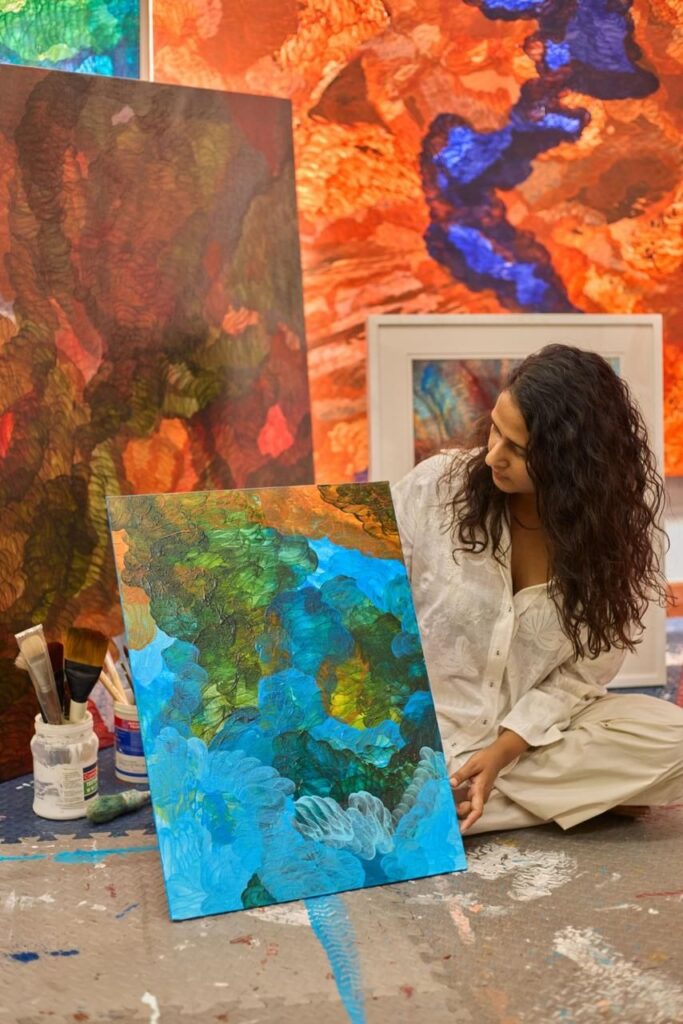
4. When you begin a new artwork, what happens first, is it silence, an idea, a vision, a sketch, or simply a colour that arrives? Could you walk us through the creation of one of your favourite pieces?
Usually, it begins with silence. Then, a single colour emerges in my mind, a tone that somehow carries an emotion I cannot yet name. From there, the process becomes a conversation between that emotion and the material. One of my favourite works began with a deep, stormy blue. As I layered and erased, other hues appeared like memories resurfacing. The final piece felt like an exhale, as if the painting knew what it wanted to become long before I did.
.5. You have travelled extensively, gathering impressions from landscapes and cultures. Tell us about one journey that completely altered your way of seeing, and how it shows up in your work today.
Travel has always shaped the way I perceive light, atmosphere, and emotion, but Sri Lanka, in particular, left a lasting impression on me. The constantly shifting clouds there felt almost alive; they carried a rhythm that influenced how I began to see movement and transition in my work. The sound of water, especially at the beach, became a kind of pulse that I now often seek to translate into painting. The tonal shifts of the sky, the mist, the softness of air after rain, all these sensations taught me how transient beauty can be, and how much emotion lives within those quiet, passing moments.
6. Mixed media gives your paintings texture and depth. Is there a material you experimented with unexpectedly that surprised you and changed your process forever?
I discovered the power of water. I primarily work with acrylic paints, which have great intensity, but it was the ratio of water to paint that became an unexpected turning point. What began as a simple experiment of diluting pigments to see how they moved, eventually changed my practice entirely. Water introduced unpredictability and softness, a sense of flow that I could not control but could respond to. Alongside that, the use of “texture white” became essential. It allowed me to build subtle layers, creating a dialogue between density and lightness on the surface. These two elements together reshaped how I think about depth and atmosphere in my paintings.
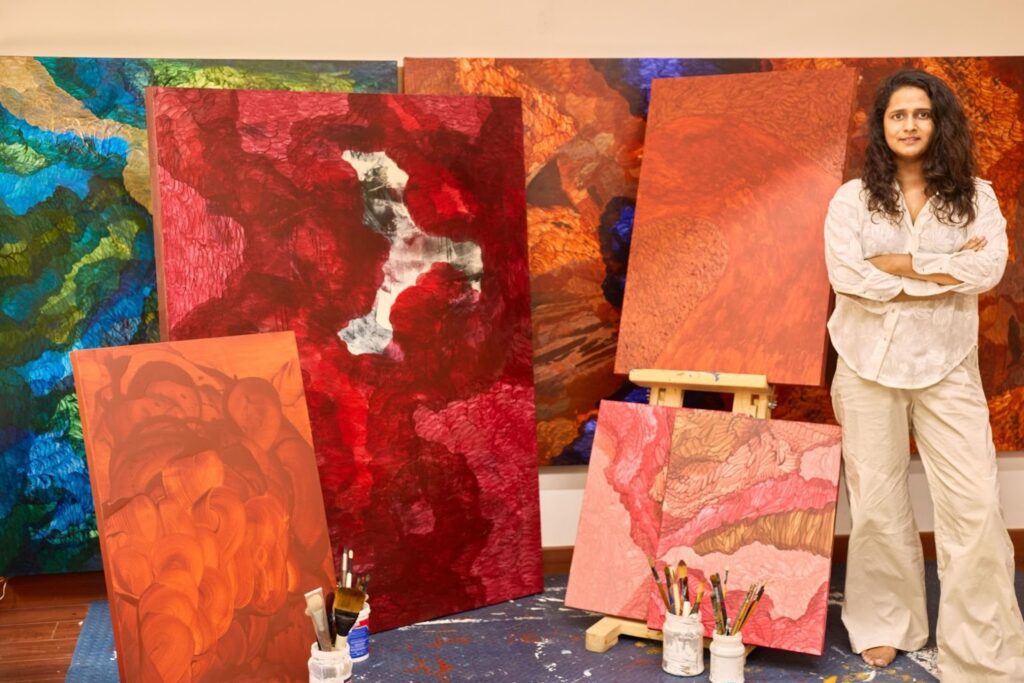
7. Your palette often radiates optimism and warmth. Has there been a time when your emotions were the opposite, and if so, how did that tension manifest in your art?
Absolutely. There have been moments of loss, confusion, and solitude, but I have never been able to paint in darkness. Even when I process pain, it somehow transforms on the canvas into something lighter, as though the act of painting itself heals it. I think that is why my palette leans towards hope, it is my way of creating balance.
8. Sometimes artists speak of moments when a painting “speaks back” or takes control. Has this ever happened to you, when a piece turned into something you did not plan?
Yes, often. I think that is when the magic happens. There are moments when I lose control of the process, when colours blend in ways I did not expect or when an unintended gesture changes everything. In those moments, I stop directing and start listening. The painting begins to lead, and I simply follow.
9. The idea of belonging appears strongly in your work. Over the years, has your own definition of ‘home’ shifted? How is that evolution reflected in your canvases?
Home has become less about geography and more about emotion. It is wherever I feel stillness, sometimes that is in nature, sometimes in memory, sometimes just within myself. Earlier, my work used to be full of places; now it is about the feeling of being in between them. My canvases reflect that shift, from external landscapes to inner ones.
10. If you imagine your art decades from now, hanging in someone’s home or in a museum, what story would you hope they hear when they stand before it?
I hope they hear silence, the kind that makes you listen inward. If my paintings can offer even a moment of calm, of connection, or remind someone of something they once felt but forgot, that would be enough. I don’t want my work to instruct; I want it to invite.
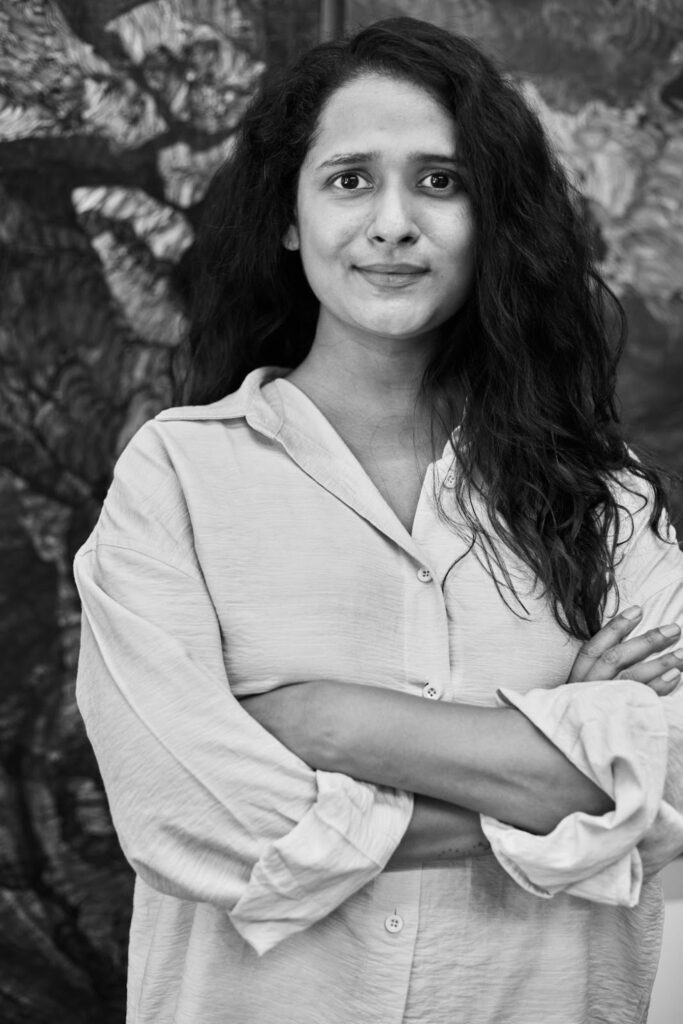
In Savya Jain’s world, memory is not a fixed point but a living texture, something that breathes, dissolves, and re-emerges in colour. Her paintings, shaped by sensitivity and surrender, invite quiet introspection. Through every layer and wash, she continues to blur the boundary between the tangible and the emotional, reminding us that art, like memory, is an act of remembering how to feel.

